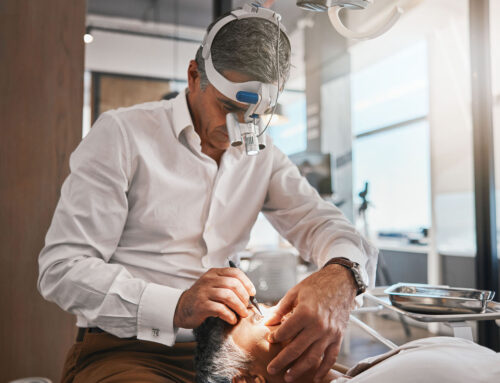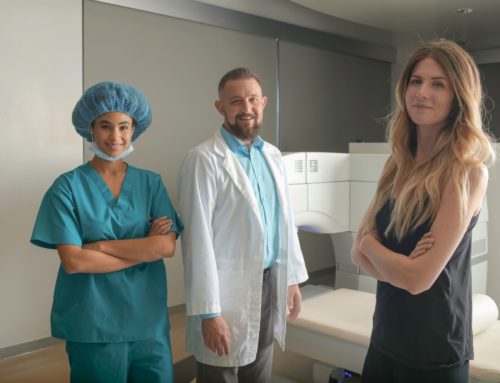Also known as blended vision, monovision is a surgical treatment that corrects both near and long-distance vision. It can be used on individuals who have myopia (nearsightedness), hyperopia (farsightedness), or mixed astigmatism, but is commonly used with individuals who are experiencing presbyopia. This is a common age-related eye condition that causes people to have trouble focusing on close-up objects. With monovision, the lenses used are different from one another, with one lens prescribed to see better far-away, while the other focuses on close-up objects, resulting in a compromise between the two. While monovision is a more time-intensive surgical procedure, it balances out a patient’s vision, reducing the need for the patient to rely on glasses or contact lenses for daily activities.
Who is a Good Candidate For Monovision?
You are a good candidate for monovision treatment if you already wear contact lenses or glasses for an existing eye condition (near or farsightedness), and are required to use a different set of eyeglasses or contacts to see objects that are up close (reading glasses). If you are someone with presbyopia, the age-related progressive condition that makes it hard to see objects close up, you are also a good candidate.
If you are unhappy carrying multiple sets of glasses with you, tired of switching between them, or frustrated in needing to use reading glasses in addition to contact lenses, then monovision may be the right treatment for you. Monovision can help reduce your need for reading glasses, while still allowing you to see objects that are far away.
How Does Monovision Work?
As humans, we use binocular vision, which means that we use both of our eyes to perceive a single, three-dimensional image of our surroundings. Typically, one of our eyes is dominant over the other, so when looking at objects that are far away, our dominant eye is the one that takes in and sees more of our environment. Of course, the reverse is true when looking at close-up objects.
In individuals with presbyopia, the ability to see objects close-up, such as very fine print, is near impossible. This makes it very difficult to read a book or newspaper and causes you to hold items farther away from yourself to see them with crisper vision. Also, adding brighter lights tends to help you see a bit better. Presbyopia occurs in individuals between the ages of 38-48 and is due to the aging of the eye (it becomes less flexible).
To help combat presbyopia, monovision treatment is often recommended. One of our doctors will run a simple eye test to see which one of your eyes is the dominant one, and this one will be fitted with a lens for distance vision. Meanwhile, the weaker eye will be fitted with a lens for near vision.
In leaving one eye slightly nearsighted, the sharpness of your distance vision is compromised, but your eyes are better able to work together to provide you with balanced vision. The monovision treatment is customized to you, according to your occupation, hobbies, and daily activities.
What to Expect When Adjusting to Monovision Treatment
It’s worth noting that while the majority of people adapt well to monovision, it may take some individuals a little time to get used to their eyes working in tandem together this way. At first, you may find yourself a bit disoriented, as your depth perception during this period may not be as good as you are used to, and you may occasionally feel off-balance. Give it a little time, and these symptoms will disappear, and before too long, you may not even recognize which eye is your distance eye and which is your close-up eye. Those who are contemplating monovision treatment may be advised to try out monovision contact lenses first, to ensure that they will be happy with the outcome.




